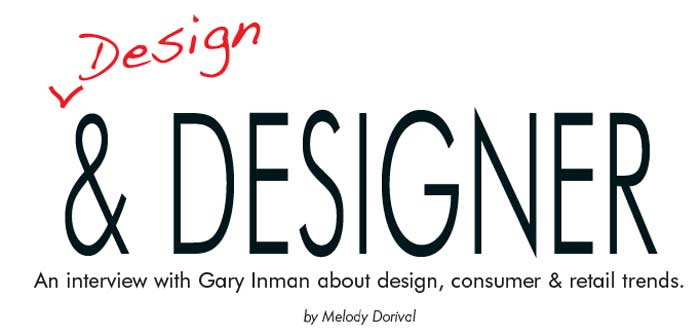
Gary Inman’s degrees and advanced studies in fashion, textile and costume history, art history, and architectural history inform his work as a furniture designer, author, educator and lecturer. He has been a national spokesperson for the American Society of Interior Designers (ASID), has appeared on the A&E series America’s Castles, the PBS series Mansions and Monuments, as well as the Design Life Network, Editor-At-Large, High Point Market TV, and with Design Tourist. His work has been published in Verandah, House Beautiful, Elle Decor, The Washington Post, Southern Accents, Traditional Home, Hotel Design, Home & Design and many others. A Style Spotter and Instagram Tastemaker at recent High Point Markets, he is the creator and editor of The Art of Fine Living, a blog advocating fine design as elemental to our lives.
Gary is on the board of directors of the Bienenstock Furniture Library in High Point. He also makes time for his “day job” as vice president of Hospitality with the design firm Baskervill working with a team of over 40 designers.
Design Influences
Considering Inman’s wide range of educational pursuits, we asked who and what influence his work. “In terms of people,” he replied, “there are probably three or four people that have had an enormous impact on the way I think about design. My mentor, Lucien Therrian, has definitely had a lasting influence, along with Andrea Palladio and Thomas Jefferson because of their disciplined intellects, and French Art Deco designer Émile-Jacques Rhulmann. Every piece I design, even if the goal is to design a very modern piece, has to have a foundation of proportion and symmetry. Those kinds of bones of design are still there, coming through the classical tradition.
“And from the fashion side, Coco Chanel has been a tremendous inspiration. Like Palladio, everything with her is balanced and harmonious. It’s edited down to the necessary essence of the design. There’s not a lot of fluff or frivolity with Chanel, just a clear statement, which is why her style has prospered and survived for so long.
“When I travel I look for interesting buildings, museums, and historic houses to tour. I incorporate a lot of art and architectural history into what I do. Film and fashion are also very powerful influences. Fashion shapes people’s taste… it’s there all the time. We see it in magazines, on blogs, social media, and in film. Even if they aren’t intentionally following fashion, people are still exposed to it. They see what celebrities wear on award shows, and it leads the trends in home furnishings design. This year, for example, at the New York Metropolitan Museum of Art’s Costume Institute Ball, it was interesting to see the big theme of the evening was silver and metallics. Copper has mostly come and gone, and brass has had its heyday again. But silver was the big story and that’s going to translate into home furnishings in interesting ways.”
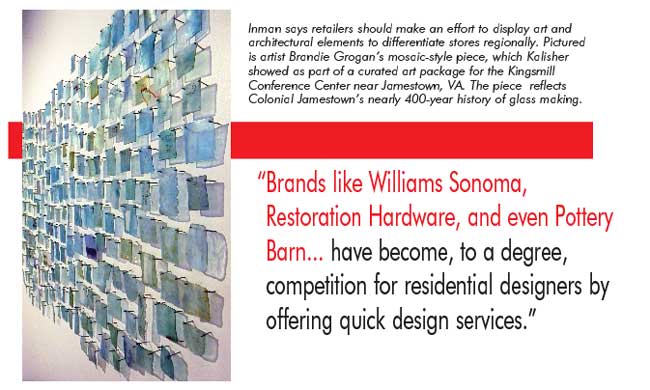
The Retail Design Landscape
With such easy access to information, we wanted to know how that has changed how designers work. “When I came out of design school,”Inman said, “I was really eager to partner with an older designer, someone who had a proven track record and a good portfolio. I wanted to offer myself up as someone to be developed, educated, and really taught how to do design.
“Designers have traditionally been innovators and explorers, but the Internet has truncated that process. Many designers develop their entire scheme on the computer. Mill trips, antiquing, connoisseurship, working the major trade shows has waned with the new generation. Although there are exceptions here and there, for the most part, younger designers feel like they have access to all the necessary information online; that they can bring the world to their desks, and that their expertise comes from being able to use those online sources.
“The Internet changed everything. It gives my clients access to many of the same products that I am able to see when I go to market. On the retail side, brands like Williams Sonoma, Restoration Hardware, and even Pottery Barn, as well as some of the big box retailers, have really upped their design game. They’ve become, to a degree, competition for residential designers by offering quick design services as part of their product offering. They’ve hired creative people to manage their online presence, their cataloging, so that everything looks lifestyle oriented. In addition, they’ve added a lot more in terms of design content, when compared to even five years ago. The big change for our industry is that these huge retailers are bringing good design to consumers at all different economic levels. And these designs follow current trends.”
What Consumers Want
Since the Internet is so efficient at broadcasting style trends, Furniture World wanted to know if there has been a shift in what consumers want. “Absolutely,” Inman replied without reservation. “Today’s home furnishings consumers want something that feels unique, individual, and personal. This presents a real challenge for furniture designers and manufacturers who have their own vision for a collection. There has to be a starting place.
“Pieces are created to have a certain look, convey beauty, and serve certain functions – but consumers want to be able to tweak things in a thousand different ways. Some manufacturers, such as Hickory Chair, have been able to respond to this desire, embrace it, and make it one of their strengths by offering unlimited finishes, the ability to change sizes, colors, and use the customer’s own hardware and fabrics. There is a lot more customization than there’s ever been before in my career. In the past, major manufacturers introduced collections that could stay in their lines for multiple seasons.
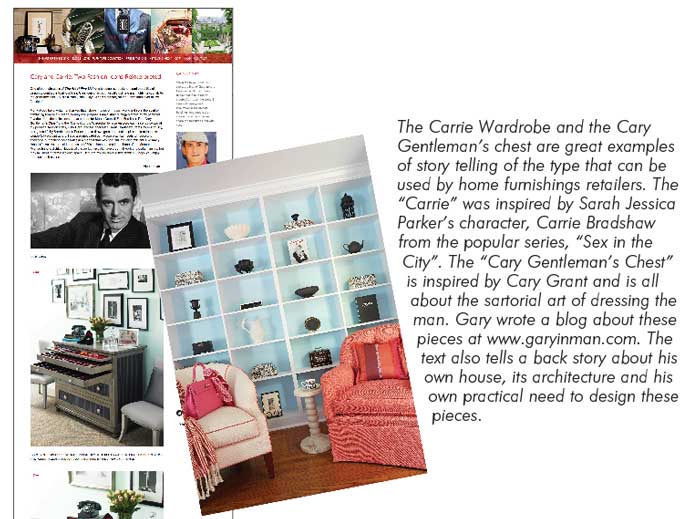
“Today people seem to have a yearning to define their personal brand, to craft their identity. I believe it’s a reaction to a feeling of sameness that’s been brought about by technology. Even with the younger generation, I hear it over, and over again. No matter the specific style they end up choosing, they’re looking for ways to have a unique experience of their life, whether it’s the way they’re dressing, or the way they’re traveling, or how they’re decorating their homes. They want to feel like individuals, and with so much connectivity and so much sameness, it is very hard to do that.
“The trend, especially for younger consumers, is that they don’t want anything that feels contrived, planned, or is too much like a collection, or suite. Those attributes make it harder for them to feel like they are crafting their lives in a unique, creative and esoteric way. It is important for the industry to know that is their perception.
“Consumers today have more eclectic preferences; they want to look well-traveled and cultivated. Perhaps words like ‘collected’ and ‘curated’ are overused, but they do capture the aspiration. The impact on the furniture business has been profound. Collections have to appear less coordinated – there is a penchant for the quirky and unique – but the issue is that furniture companies need to have core SKUs that drive their revenue. I believe the secret is to offer many finish options, allowing a high degree of customization in terms of color, scale, and even hardware. The struggle for ‘individuality’ in an over-connected world cannot be overstated.
Using Social Media
Having heard how the Internet allows for easy dissemination of styles and designs, Furniture World asked Mr. Inman how this visibility has informed his web presence. “The biggest change I have noticed is the impact social media has had on the interview process. Over the past three years, I never encounter a client that does not have a sense of knowing me and my design process. With so much content readily available, clients have already shaped their opinions before we meet. For the most part it is positive, though some clients can feel somewhat intimidated at first.
“Online archives, like Pinterest, have benefited the process of creating concept studies. I have 70,000 pins that I use constantly and share with colleagues and clients. My blog, The Art of Fine Living, forces me to focus ideas and share insights with potential clients. I find it changes the dynamics of interviews. The blog is a great brand-building tool, and for someone who enjoys panels and lectures, it is a wonderful way to get your point of view in front of people.
“Social media is a way for all of us to earn credibility. Stores like
Serena and Lily, who do a big online business, as well as having five brick and mortar locations, do such a good job of telling their story that it’s easy to get a real sense of what they are about. Customers feel like they know these women personally. The secret to doing this effectively is always about creating content and context.
“We’ve noticed in our own social networking around architecture and hotels, that people love it when we share our process, our back-story with them. They, in turn, share the information with their social media networks and make comments. People seem to connect to that kind of information on a personal level. We might post sketches and talk about a current project that we’re excited about. It becomes a driver of enthusiasm and interest in our firm and our website.
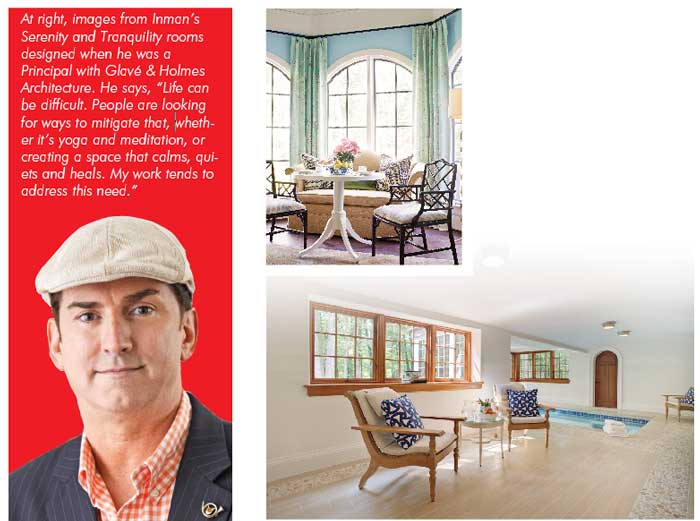
“People are hungry for a story. That’s the power of social media. It provides a platform to share your story free of charge. And all you have to do is make the time to share interesting content. The return will be so much larger than expected.”
Skillful Communication
Furniture World wondered about how the furniture industry could communicate how the furnishings we sell address the aspirations, lifestyle, and needs of the consumer. “Our industry can do a much better job of telling stories about the collections and pieces they sell,” Inman responded. “People like to share stories, both in person and via social media, about what they are thinking, about travel, why they choose one hotel over another, or this car, or that piece of clothing. There are motivations behind all of these choices, and we should be creating stories, vignettes, and tapping into lifestyles that customers can aspire to. Retailers must create context and a coherent narrative to help consumers translate what they see in the showroom to their lifestyle, thereby improving sales.
“I encourage retailers to hire legitimate designers to round out their teams. Designers bring a skill-set that is not necessarily found in sales staff. Retailers then have an opportunity to build a story around the persona and body of work of a designer. They can create their own ‘celebrities’ much the way restaurants benefit from ‘celebrity chefs’ and engage those designers to help sell product and add value to the store’s brand.
“That being said, there are far too many bad collections by ‘celebrities’ who have no credentials or even marketable taste. It is the worst thing we can do to the credibility of our industry. We should reward real designers with opportunities and we should never sacrifice our standards for quality design.
“The customer who is looking for furnishings with a dynamic, energized, and youthful feel, can be attracted through skillful visual merchandising, branding, and advertising. This must be reflected in the way products and collections are described in print and online, as well as how sales associates talk about these items. All the elements must work together to create an experiential sense that says to consumers, ‘This is who I am, this is who I want to be.’
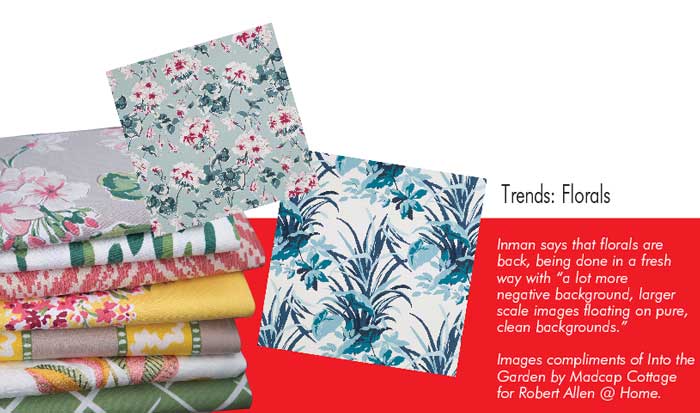
“Manufacturers, too, can benefit from forming relationships with furniture designers by sharing sales reports, consumer feedback, and production issues or obstacles so the product designer can mitigate these forces through thoughtful design. It is very easy to design in a vacuum, thinking only of aesthetics and trends. Manufacturers can help couch the relationship in reality. Communication is key!
“A dynamic interactive communication matrix is the greatest opportunity. Understanding consumer behavior, desires, fears, and responding in a timely and respectful manner will assure longevity and profitability. Hotels have pioneered this effort in recent years and have teams that are watching guest comments in real time. It affords hotels and resorts the chance to correct a problem, assure a positive review and recommendations to other travelers. Although furniture production cycles are much longer, this same process needs to occur.”
Tell Furnishings Stories
We were intrigued with a quote of Mr. Inman’s: “Great design should convey the story of the person living in the space. Layers of meaning is always exciting.” We wanted to know how Furniture World readers could think about this from a product selection, messaging, and visual display point of view.
“Retailers need to present a story and a context for furniture and accessory items,” Inman replied. “This is not terribly difficult to do today with advances in customized interior graphics. Do it right and suddenly you’ve created a feeling, an aspiration, a story that resonates with many people who want to think that what is presented represents the lifestyle they’re leading. And they’re going to be inclined to purchase and to buy into that.
“The way designers, manufacturers and retailers craft stories around furnishings is incredibly important, and helps to make customers believe that they are looking at something that is more than just a sofa or credenza. That’s why every piece I design has a name, a little persona or story. It’s something that people like and remember. The art of story-telling can transcend function and cost. There are intangible qualities that can have a profound effect on how people feel about a piece or a design.
“Retailers should be looking for ways to create that vision. Case in point: retailers who visited Baker Furniture at the last High Point Market saw the Jean-Louis Deniot Collection – an immersive environment. Visitors entered his part of the showroom through a long tunnel. It felt almost like being born again; emerging on the other side into a space entirely driven by his design aesthetic and world view. The display told a story that brought together culture, dance, music, and furnishings. It suggested a lifestyle many would aspire to. If I were a retailer, and had the capacity to do it, I would want to figure out a way to create immersive environments like this in order to get consumers engaged and excited.
“Louis Shanks Fine Home Furnishings in Austin, Texas has done an excellent job in this regard. As customers move through that store, they have different experiences. Management understands their target customers and has created areas geared toward these people, with a focus on age brackets, lifestyles and housing situations.
“Home furnishings retailers could benefit by sharing their back stories because people are fascinated by the back-story and by process. I have begun to share images of concept boards and sketches on current projects that always create a dialogue with friends, colleagues, and potential clients. I recently won a commission because the client read my blog and loved ‘my passion.’ They knew they wanted someone like that to create their home. I always find kindred spirits when I share a lecture, write an article or a blog, or share images on Pinterest and Instagram. Even very simple things, such as throwing down a stack of wallpapers that just arrived and writing a clever sentence in an Instagram post takes little time, but furthers the story.”
What Can Retailers Learn From Boutique Hotels
We invited Mr. Inman to compare what is happening with consumers who are looking to furnish their homes and his work designing furnishings for hotels on the commercial side of his business. “About 10 percent of my work is high-end residential design,” he responded. “At Baskervill, we do a tremendous amount of work for hotels and resorts, which makes up most of the rest of the business that I’m involved with.
“All the major hotel brands are looking for boutique properties. They are also responding to a consumer desire for the unique, the storied, the experiential. In that regard, there are definite overlaps with what consumers are looking for in terms of lifestyle and the process of entertaining. In some regards, hospitality offers more freedom, particularly boutique design. Hotels are moving faster than they ever have before, with designs being on-trend or leading trends. Because hotels have to commit to an aesthetic for five to seven years, they do a lot of research, working with firms like Baskervill, to create concepts. Marriott’s AC Hotels and Moxy Hotels are two of the new lifestyle-brands that are doing very well.
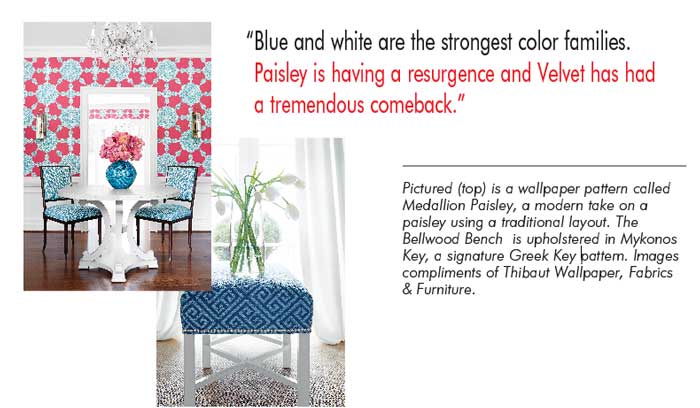
“Residential clients expect to get longer use from their investment in home furnishings, but influence does flow in both directions. With the paradigm shift to ‘Lifestyle’ hotels, design tends to be at the forefront. Theatricality, lighting effects, dramatic color stories, curated art packages are some ways to add layers of meaning to the experience of a great hotel.”
Design Philosophy
Given the tall order of creating the feel of bespoke furnishings, we wondered about Inman’s design philosophy. He answered succinctly, “I try to make everything I design reflect the grace and tranquility I aspire to find in my own life. That’s true whether a design is for a hotel, furniture collection, accessories, lighting or rugs. I am an advocate of relaxed elegance using classical principals of scale and proportion, fashion colors and textures. I believe that we are all looking for serenity, healing, and ease of living. Formality and complicated entertaining simply don’t work today.
“Many furniture buyers are looking to create an oasis – a serene, nurturing place. Hotel guests are looking for a similar experience when they travel or vacation. Life can be difficult. People are looking for ways to mitigate that, whether it’s yoga and meditation, or creating a space that calms, quiets and heals. My work tends to address this need.”
Style And Merchandising Trends
We were eager to know how Mr. Inman saw styles in home furnishings developing. He began by talking about the consumer. “A great consumer shift is underway. As Baby Boomers address the physical changes that come with aging, they are downsizing, right sizing, and reevaluating their lifestyles. Millennials, on the other hand, are just wired differently and tend to value experience over material luxury. They don’t want to live in big houses like their parents. I believe that we are going to see tremendous changes in storage systems, automation as a way to move and access furniture, and customized ergonomics in seating and sleeping.”
Regionalism: “I have noticed a growing interest in regionalism. Retailers primarily buy from companies that manufacture goods produced in Asia. There are long lead times that work against a need for local and authentic expression. Paying attention to this trend has fundamentally changed the way we’re working on the hotel side of our business, because no one wants to take a big-box approach anymore. They want something that feels personalized to their location. That’s been a big issue for hotels to come to terms with. It’s probably harder for major furniture manufacturers to do that because they are often forced to commit to whole collections.
“In the past I’ve told consumers to listen to their own inner voice – nothing works better than authenticity. Consumers should follow their own taste and lifestyle in making design choices. Trends are not authentic unless they truly resonate. Family heirlooms, treasures collected when traveling, local or regional art, and favorite colors, textures and lines are the key s designers and retailers can use to help create a very personal home. Retailers can make an effort to pick and choose unique pieces that make sense for their brand and their customer base to address this trend.”
Color: “Color is changing much faster than ever before. I can tell you that gray is the new neutral, and that there is a big anti-beige trend. Blue and white are the strongest color families. Blue has been holding strong for much longer than anyone ever thought it would. Blue has a huge positive emotional effect on people. Colors like red, pink, and orange typically are not going to become dominant colors – they’re accents.
“I think there’s an awful lot of fluff published and written about color. I’ve become more skeptical of those color trend reports than I used to be.
“I go to all the markets, read every fashion magazine and believe that if Furniture World readers pay attention to what’s happening in fashion, they will have a good idea where color sensibilities are trending. Home furnishings follow those trends to some extent. If retailers know the neutral and dominant base colors and have a sense of how to incorporate interesting accents, they will have a good idea of what customers will be buying.”
Texture: “Texture has become huge, in both residential home furnishings and hotel design. People want fabrics that are tactile, that feel and look luxurious. Velvet has had a tremendous comeback. We are using thousands and thousands of yards of all different types of velvets – burnout velvets, cut velvets, embossed velvets. They feel luxurious, have a nap and a sheen that picks up the light.”
Pattern: “Paisley is having a resurgence. I’m often surprised at what starts to show up in the trends. There are lots of new types of plaids now, and florals are back in a huge way. On the surface that’s surprising, but they’re being done in a fresh way. There is a lot more negative background, larger scale images floating on pure, clean backgrounds. Patterns have been modernized to fit with the current time.”
Flexibility: “Another big trend we see is furniture pieces that are flexible in their purpose and have innovative storage options. Some of the designs being developed are actually quite brilliant. Automated furniture can convert a room from a bedroom to a studio space or sitting space. I think this trend might follow the path we saw with communication apps like Twitter. When it first came along, there were early adapters, but it seemed a little silly, and most people thought it wasn’t going to go anywhere. And then, suddenly, it became a phenomenon. I think there’s going to be a shift in that direction, not only because of young people, but also Baby Boomers who are downsizing and want to live a simpler life with fewer, easier-to-maintain possessions. For people with physical limitations, I think that there will be more furniture that includes adaptive technology to meet their needs.”
Customization: “The more manufacturers can build customization into their design, the better. Production times vary, and there is frustration on the part of designers when new introductions take six months to ship to their clients. And few clients are willing to wait that long.
“On the manufacturing side, almost everyone that I work with now, Hickory Chair, Mitchell Gold, Century, Baker, are providing multiple choices within a given range. Technologies, such as digital printing on fabrics, is something we are doing on the hotel side. Almost any pattern that we want can be printed digitally and in a cost-effective way. We will see more of that on the residential furniture side as well. For carpet companies, there’s a lot more flexibility than there’s ever been.
“Significant companies like Calico Corners,
Serena and Lily, and Coco Kelly have really embraced the idea of being your own decorator, your own designer. They are all about giving customers choices and flexibility, with the only limitation being their imagination.”
Sustainability: “On the horizon is greater emphasis on sustainability, design with a back story – where, who and even why.”
Visual Merchandising: “Visual merchandising has never been more important than now. If I were a retailer, I would have a good team of visual merchandisers who stay on top of what’s happening. They would be thinking of ways to create vignettes to display what people are seeing in blogs, magazines, and films. That way, when consumers come into the store they could see that the store is in the fashion business and is on top of the trends. Clever visual merchandisers can really breathe new life into slow-moving merchandise. There are plenty of ways to do a quick re-boot of displays, like changing up wall colors to give the floor a new look and a fresh start.”
Current Projects
Finally, Furniture World asked about Inman’s current projects. “Right now,” he answered intriguingly, “I am working on a large country estate and a luxury resort, plus an exciting project on the residential design side, but I can’t say more about that right now.” We are looking forward to it.
For more about Gary Inman visit
www.garyinman.com.
Russell Bienenstock is Editor-in-Chief of Furniture World Magazine, founded 1870. Comments can be directed to him at editor@furninfo.com.